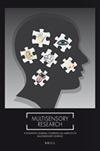人脸、声音和句子内容的多模态信任效应
IF 1.8
4区 心理学
Q3 BIOPHYSICS
引用次数: 0
摘要
信任是人类社会交往的一个重要方面,研究发现了许多有助于同化这一社会特征的线索。其中两个线索是声音的音调和脸部的宽高比(fWHR)。此外,研究还表明,口语句子的内容本身对可信度也有影响;这一发现尚未被引入多感官研究。目前的研究旨在调查之前提出的信任理论与多模态环境中声调、fWHR 和句子内容的关系。研究人员要求 26 名女性受试者在看到一张脸的同时,判断说出中性或浪漫句子的声音的可信度。声音的平均音高和 fWHR 均有系统地变化。结果表明,口语信息的内容是预测多模态可信度的重要因素。此外,在多模态环境中,语音的平均音高和面部的 fWHR 似乎是有用的指标。这些效应在不同模态中相互影响。这些数据表明,与任务无关的视觉刺激会影响对声音的信任。我们鼓励未来的研究澄清这些发现是否在不同性别、年龄组和语言之间保持一致。本文章由计算机程序翻译,如有差异,请以英文原文为准。
The Multimodal Trust Effects of Face, Voice, and Sentence Content
Trust is an aspect critical to human social interaction and research has identified many cues that help in the assimilation of this social trait. Two of these cues are the pitch of the voice and the width-to-height ratio of the face (fWHR). Additionally, research has indicated that the content of a spoken sentence itself has an effect on trustworthiness; a finding that has not yet been brought into multisensory research. The current research aims to investigate previously developed theories on trust in relation to vocal pitch, fWHR, and sentence content in a multimodal setting. Twenty-six female participants were asked to judge the trustworthiness of a voice speaking a neutral or romantic sentence while seeing a face. The average pitch of the voice and the fWHR were varied systematically. Results indicate that the content of the spoken message was an important predictor of trustworthiness extending into multimodality. Further, the mean pitch of the voice and fWHR of the face appeared to be useful indicators in a multimodal setting. These effects interacted with one another across modalities. The data demonstrate that trust in the voice is shaped by task-irrelevant visual stimuli. Future research is encouraged to clarify whether these findings remain consistent across genders, age groups, and languages.
求助全文
通过发布文献求助,成功后即可免费获取论文全文。
去求助
来源期刊

Multisensory Research
BIOPHYSICS-PSYCHOLOGY
CiteScore
3.50
自引率
12.50%
发文量
15
期刊介绍:
Multisensory Research is an interdisciplinary archival journal covering all aspects of multisensory processing including the control of action, cognition and attention. Research using any approach to increase our understanding of multisensory perceptual, behavioural, neural and computational mechanisms is encouraged. Empirical, neurophysiological, psychophysical, brain imaging, clinical, developmental, mathematical and computational analyses are welcome. Research will also be considered covering multisensory applications such as sensory substitution, crossmodal methods for delivering sensory information or multisensory approaches to robotics and engineering. Short communications and technical notes that draw attention to new developments will be included, as will reviews and commentaries on current issues. Special issues dealing with specific topics will be announced from time to time. Multisensory Research is a continuation of Seeing and Perceiving, and of Spatial Vision.
 求助内容:
求助内容: 应助结果提醒方式:
应助结果提醒方式:


